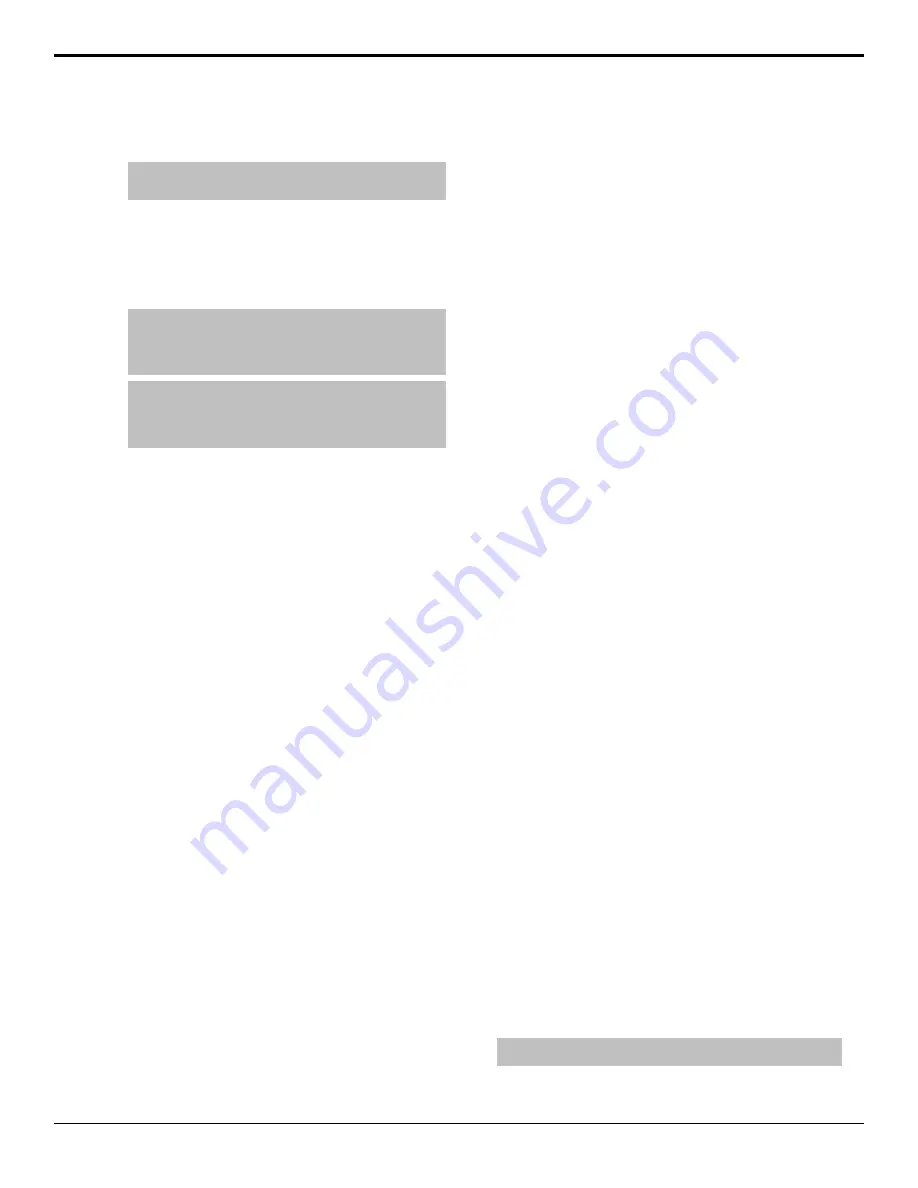
1.
Press
DVE
. Click
Navigation Menu
>
Live
Assist
>
MEDVE
.
Tip:
You can use the same procedure for a MiniME
™
or
MultiScreen.
2.
Use the
Time
knob to set the length of the
background transition. Click
Trans Rate
and enter
the length of the background transition in the
ME
Rate
field, or the length of a key transition in the
Key X Rate
field.
Tip:
If you have a C2S/C2X/C3S/C3X control panel, press
ME RATE in the Effects Memory area for the ME you want
to change the rate for, use the keypad to enter the new
rate, and press Enter.
Tip:
If you have a C2S/C2X/C3S/C3X control panel, press
KEY RATE in the Effects Memory area repeatedly to select
the Keyer you want to set the rate for, use the keypad to
enter the new rate, and press Enter.
3.
Use the
Dirctn
knob to select the direction that the
wipe travels.
4.
Press the
Dirctn
knob to select whether the wipe
runs forward during the first transition and then
reverse during the second (
FF
), or if it always goes
in the same direction.
5.
Press
NEXT
.
6.
Use the
Effect
knob to select the DVE pattern you
want to use. You can also select most of the patterns
by pressing, or double-pressing, the pattern button
directly. Click a
DVE Pattern
button to select the
DVE wipe pattern you want to use.
•
PushL
— Push Left (
0
)
•
PushR
— Push Right (double-press
0
)
•
PushU
— Push Up (
1
)
•
PushD
— Push Down (double-press
1
)
•
SqzHor
— Squeeze Horizontally (
2
)
•
SqzVert
— Squeeze Vertically (
3
)
•
SqzCtr
— Squeeze to the Center (
7
)
•
PushUL
— Push to Upper-Left (
4
)
•
PushUR
— Push to Upper-Right (double-press
2
)
•
PushDL
— Push to Lower-Left (double-press
3
)
•
PushDR
— Push to Lower-Right (double-press
4
)
•
SqzUR
— Squeeze to Upper-Right (
5
)
•
SqzUL
— Squeeze to Upper-Left (
6
)
•
SqzDR
— Squeeze to Lower-Right
(double-press
6
)
•
SqzDL
— Squeeze to Lower-Right
(double-press
5
)
•
CirclL
— Circle Left (
8
)
•
CirclR
— Circle Right (double-press
8
)
•
FlyTru
— Fly Through (double-press
7
)
•
Strtch
— Stretch Horizontally to Black (
9
)
•
Tumble
— Tumble Down (double-press
9
)
•
1000lb
— Falls and then Bounces
•
SqzU
— Squeeze Up
•
SqzD
— Squeeze Down
•
SqzL
— Squeeze Left
•
SqzR
— Squeeze Right
MediaWipe Transitions
A MediaWipe allows you to use an animation to cover
a transition. When the transition starts, the switcher plays
the selected animation over top of the background and
keys that are being transitioned. A MediaWipe can be
used to cover a cut, dissolve, wipe, or DVE transition.
For a cut MediaWipe, the transition is performed when
the cut point is reached. It is important to use a full-screen
image in the animation at the cut point so that the cut is
not visible on-air.
Keep the following in mind when performing
MediaWipe:
•
Although you can select a still image for a media
transition, it is not recommended.
•
Only Auto Transition should be used for Media
transitions. Using the fader to perform the transition
manually could result in jumps in the animation.
•
The duration of the transition (Time) is set by the
length of the animation and the play speed of the
animation.
•
The audio associated with a MediaWipe is only
available on the MultiViewer output.
•
You cannot perform a MediaWipe transition on a
MiniME
™
or MultiScreen.
•
If the Media-Store channel being used for a
MediaWipe is set as a MSFS, the transition is
switched to a standard dissolve.
•
MediaWipe layer setting are stored in the ME and
not with the media item.
To Set Up a MediaWipe
A MediaWipe requires that you select the animation you
want to use and then set up how you want to transition
performed under the animation. This information is stored
with the media item when you press save.
Note:
You cannot set up a MediaWipe from a C1 control panel.
1.
Press
MEDIA
.
30
• Transitions — Carbonite Operation Manual (v13.0)






























